SOUTH DAKOTA: CONSTRUCTION OF THE GIGANTIC LBNF GETS UNDER WAY
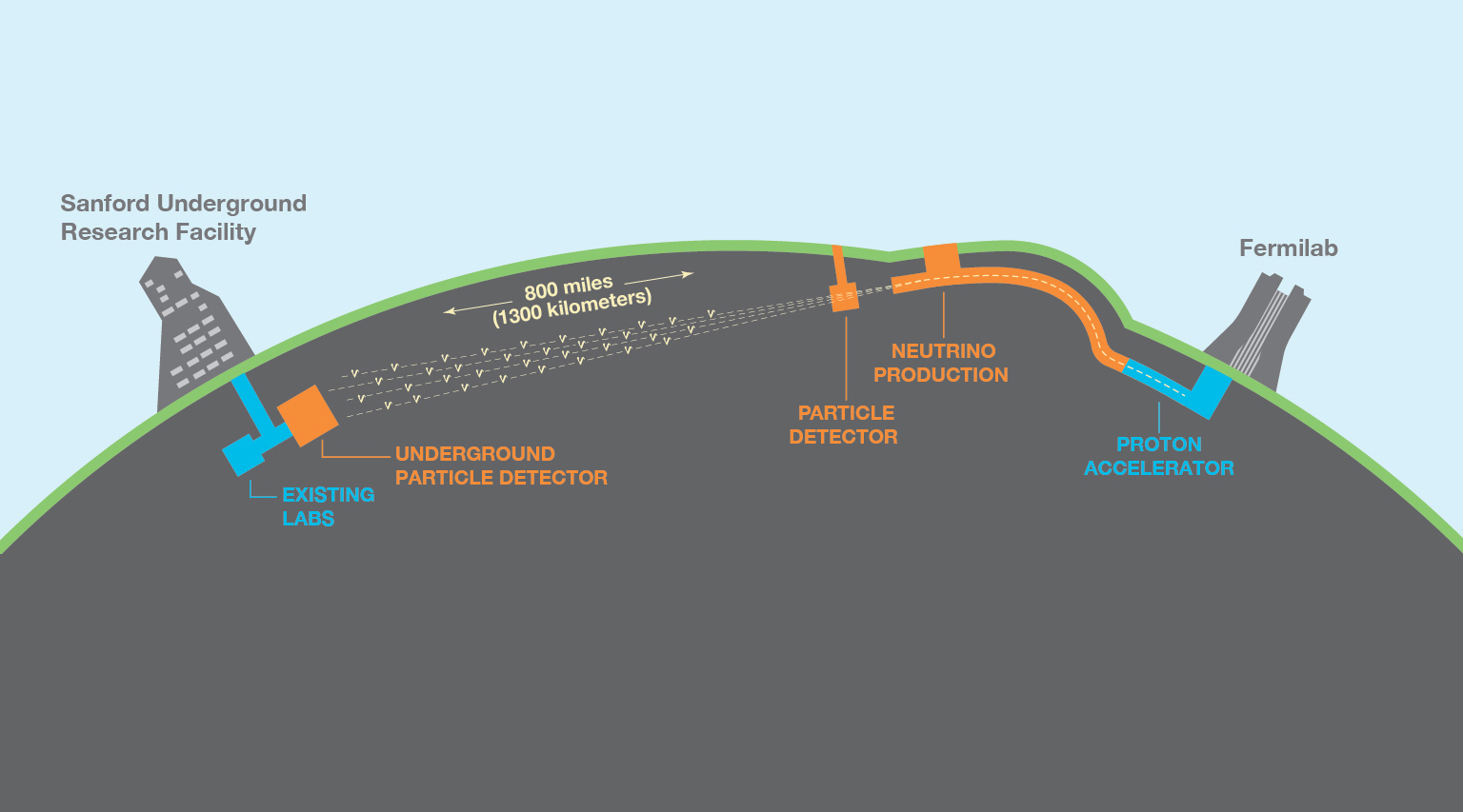 The inauguration ceremony of the construction work for the gigantic Long Baseline Neutrino Facility (LNBF), which involves a community of about 1,000 scientists and engineers from 30 countries, took place yesterday in the Sanford Underground Research Facility (SURF) in South Dakota (USA). LNBF will host the world's largest experiment, with international governance, for the study of the properties of neutrinos: the Deep Underground Neutrino Experiment (DUNE), which will study neutrons generated and sent 1300 km away from the Fermilab in Chicago, the leading American national laboratory for research on accelerators and particle physics. The experiment has two main scientific goals in studying neutrino: measuring the neutrino mass hierarchy and measuring the violation of symmetry between matter and antimatter (CP violation). The project is funded by the United States Department of Energy - Office of Science in collaboration with CERN and international partners from nearly 30 countries. Dune was presented for the first time in January 2014 to the Fermilab Committee by the then director of research at CERN, Sergio Bertolucci.
In 2015 Italy, represented by INFN, through the Ministry of Education, Universities and Research, signed a technical cooperation agreement with the DOE for research at Fermilab. Bertolucci is currently coordinating the Italian physicists, belonging to INFN, engaged with DUNE in neutrino research. Fermilab is a scientific laboratory of the US Department of Energy - Office of Science, located near Chicago, Illinois, and is managed by appointment of the Fermi Research Alliance, LLC.
The inauguration ceremony of the construction work for the gigantic Long Baseline Neutrino Facility (LNBF), which involves a community of about 1,000 scientists and engineers from 30 countries, took place yesterday in the Sanford Underground Research Facility (SURF) in South Dakota (USA). LNBF will host the world's largest experiment, with international governance, for the study of the properties of neutrinos: the Deep Underground Neutrino Experiment (DUNE), which will study neutrons generated and sent 1300 km away from the Fermilab in Chicago, the leading American national laboratory for research on accelerators and particle physics. The experiment has two main scientific goals in studying neutrino: measuring the neutrino mass hierarchy and measuring the violation of symmetry between matter and antimatter (CP violation). The project is funded by the United States Department of Energy - Office of Science in collaboration with CERN and international partners from nearly 30 countries. Dune was presented for the first time in January 2014 to the Fermilab Committee by the then director of research at CERN, Sergio Bertolucci.
In 2015 Italy, represented by INFN, through the Ministry of Education, Universities and Research, signed a technical cooperation agreement with the DOE for research at Fermilab. Bertolucci is currently coordinating the Italian physicists, belonging to INFN, engaged with DUNE in neutrino research. Fermilab is a scientific laboratory of the US Department of Energy - Office of Science, located near Chicago, Illinois, and is managed by appointment of the Fermi Research Alliance, LLC.




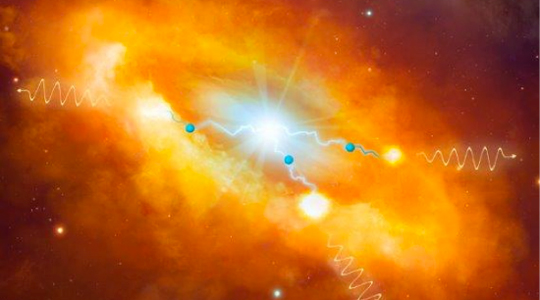 A combined analysis of data from Fermi, NASA's space telescope for the study of gamma rays, in which Italy participates with INFN, the National Institute of Astrophysics (INAF) and the Italian Space Agency (ASI), and from the HESS terrestrial telescope in Namibia, suggests that the centre of our Milky Way contains a "trap" capable of concentrating some of the fastest particles in the galaxy: highest energy cosmic rays. While Fermi detects gamma rays when they enter its LAT (Large Area Telescope) detector, on the ground HESS detects the emission when the atmosphere absorbs the gamma rays, triggering a cascade of particles that in turn produce a blue light flash, called Cherenkov light. Last March, scientists at the HESS collaboration found evidence of a diffuse flash of gamma rays at the centre of the galaxy, reaching almost 50 trillion electron volts (TeV). These are about 50 times higher than the energies of the gamma rays observed by Fermi's LAT.
The analysis published in Physical Review Letters combines the low energy LAT data with the high energy HESS data: the result is a continuous gamma ray spectrum that describes the emission from the centre of the galaxy in a range ranging from a few GeV up to 50 TeV. The study also confirms previous LAT results, indicating that cosmic rays along the plane of the Milky Way are more energetic as they approach the centre of the galaxy. How and where exactly the cosmic rays reach these energies continues to remain a mystery.
This behaviour is interpreted as a change in the way cosmic rays move through our galaxy, with the more energy-charged particles constrained for long periods in the central region.
A combined analysis of data from Fermi, NASA's space telescope for the study of gamma rays, in which Italy participates with INFN, the National Institute of Astrophysics (INAF) and the Italian Space Agency (ASI), and from the HESS terrestrial telescope in Namibia, suggests that the centre of our Milky Way contains a "trap" capable of concentrating some of the fastest particles in the galaxy: highest energy cosmic rays. While Fermi detects gamma rays when they enter its LAT (Large Area Telescope) detector, on the ground HESS detects the emission when the atmosphere absorbs the gamma rays, triggering a cascade of particles that in turn produce a blue light flash, called Cherenkov light. Last March, scientists at the HESS collaboration found evidence of a diffuse flash of gamma rays at the centre of the galaxy, reaching almost 50 trillion electron volts (TeV). These are about 50 times higher than the energies of the gamma rays observed by Fermi's LAT.
The analysis published in Physical Review Letters combines the low energy LAT data with the high energy HESS data: the result is a continuous gamma ray spectrum that describes the emission from the centre of the galaxy in a range ranging from a few GeV up to 50 TeV. The study also confirms previous LAT results, indicating that cosmic rays along the plane of the Milky Way are more energetic as they approach the centre of the galaxy. How and where exactly the cosmic rays reach these energies continues to remain a mystery.
This behaviour is interpreted as a change in the way cosmic rays move through our galaxy, with the more energy-charged particles constrained for long periods in the central region.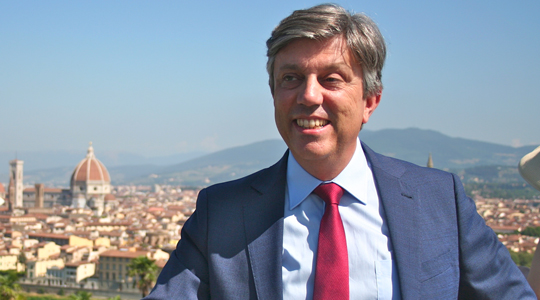 The Italian Giovanni Passaleva is the new coordinator (spokesperson) of the international LHCb collaboration, one of the four big experiments of the LHC, CERN's super accelerator, in Geneva. Passaleva took office on 1 July on expiry of the term of office of Guy Wilkinson. In the past, another Italian had been head of LHCb, Pierluigi Campana, currently director of the INFN Frascati National Laboratories. And in addition to Passaleva, another Italian, Federico Antinori, is coordinating an international collaboration at CERN, that of the ALICE experiment. Giovanni Passaleva, 52 years of age, is research director at INFN. From 2008 to 2012 he was project leader of the LHCb muon detector. From 2012 to 2014 was the national head of LHCb. From 2014 to 2017 was coordinator of the LHCb upgrade. At LHCb he has participated in the measurement of the impact cross section of J/ψ meson production in proton-proton collisions and, recently, in the measurement of antiproton production in proton-helium collisions using the LHCb gas injection system, which allows the measurement of "fixed targets”. He has been the referee of various experiments, including ATLAS and CMS.
The Italian Giovanni Passaleva is the new coordinator (spokesperson) of the international LHCb collaboration, one of the four big experiments of the LHC, CERN's super accelerator, in Geneva. Passaleva took office on 1 July on expiry of the term of office of Guy Wilkinson. In the past, another Italian had been head of LHCb, Pierluigi Campana, currently director of the INFN Frascati National Laboratories. And in addition to Passaleva, another Italian, Federico Antinori, is coordinating an international collaboration at CERN, that of the ALICE experiment. Giovanni Passaleva, 52 years of age, is research director at INFN. From 2008 to 2012 he was project leader of the LHCb muon detector. From 2012 to 2014 was the national head of LHCb. From 2014 to 2017 was coordinator of the LHCb upgrade. At LHCb he has participated in the measurement of the impact cross section of J/ψ meson production in proton-proton collisions and, recently, in the measurement of antiproton production in proton-helium collisions using the LHCb gas injection system, which allows the measurement of "fixed targets”. He has been the referee of various experiments, including ATLAS and CMS.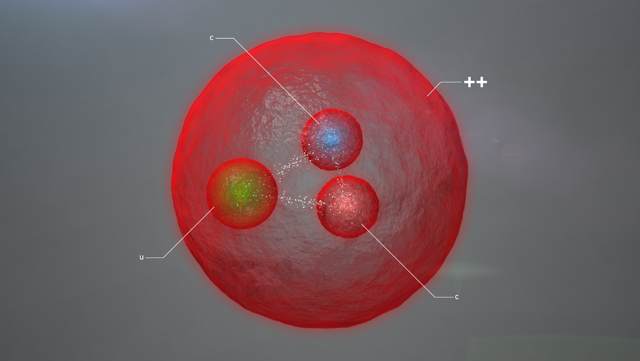
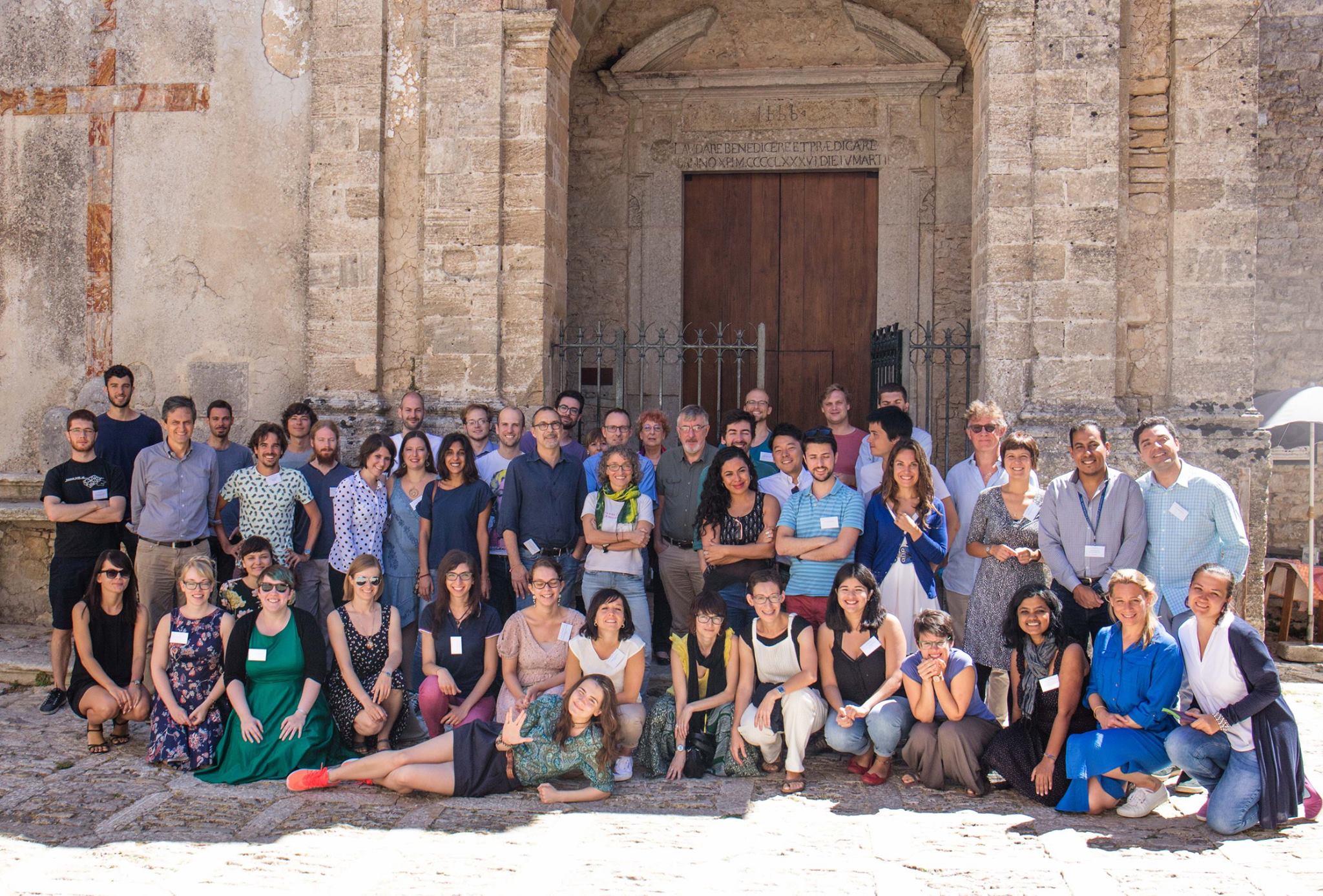 The 8th edition of the Erice International School of Science Journalism (EISSJ) started today, July 2th . The school offers every year 35 scholarships to young science journalists and communicators. The 2017 edition focuses on the theme, "Unveiling the Universe: when Science hits the News". It is taking place between July 1 to 6 in Erice, the evocative town that hosts the Ettore Majorana Centre. The Erice International Science Journalism School is a summer school organized by the Ettore Majorana Centre with the support of Centro Fermi, the Italian Institute for Nuclear Physics, and, for the first time, of the Italian science magazine "Le Scienze". The course is taught in English and includes both lectures and interactive laboratories held by international experts in scientific research, journalism and communications. Twitter: #EriceSJ2017; FB: @ISSJC; Website: http://eissjc.lnf.infn.it
The 8th edition of the Erice International School of Science Journalism (EISSJ) started today, July 2th . The school offers every year 35 scholarships to young science journalists and communicators. The 2017 edition focuses on the theme, "Unveiling the Universe: when Science hits the News". It is taking place between July 1 to 6 in Erice, the evocative town that hosts the Ettore Majorana Centre. The Erice International Science Journalism School is a summer school organized by the Ettore Majorana Centre with the support of Centro Fermi, the Italian Institute for Nuclear Physics, and, for the first time, of the Italian science magazine "Le Scienze". The course is taught in English and includes both lectures and interactive laboratories held by international experts in scientific research, journalism and communications. Twitter: #EriceSJ2017; FB: @ISSJC; Website: http://eissjc.lnf.infn.it

